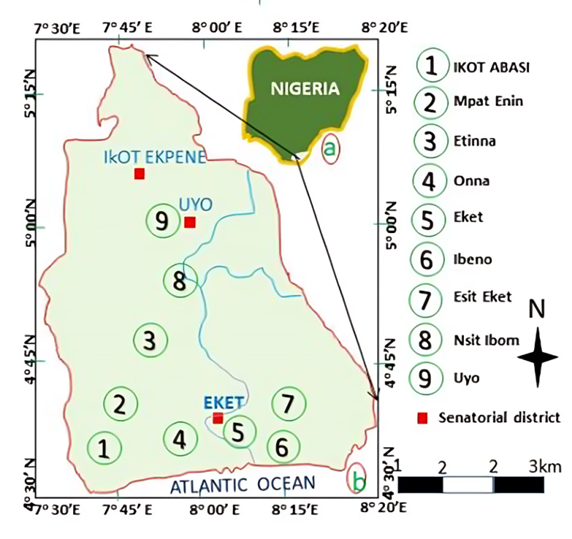Evaluating the health risks of radionuclides in welding and fabrication workshops in Akwa Ibom State, Southern Nigeria
Keywords:
Environmental radioactivity, Ionising radiation, Exposure assessment, NigeriaAbstract
Welders undoubtedly experience significant health issues. The question arises: could ionising radiation from radioactivity be responsible for these health problems, rather than solely attributing them to welding fumes and non-ionizing radiation? This study investigated the activity of primordial radionuclides, including 40K , 238U, and 232Th, and examined the health impacts of exposure to these elements within welding and fabrication environments. Using a gamma spectrometric system consisting of NaI(Tl) detector, the study revealed significant variations in radioactivity levels such as; 40K ranged from 158.79 to 552.53 Bqkg-1, with an average value of 336.22 Bqkg-1; 238U ranged from 8.23 to 55.22 Bqkg-1, with an average value of 27.85 Bqkg-1, and 232Th from 17.63 to 72.17 Bqkg-1, with an average value of 37.97 Bqkg-1. The trend in these variations correlated with the age and work frequency of welding sites. Although, the geology of the area should be considered in future research. In several locations, activity concentrations exceeded the international safe limit. Radiological parameters showed the following ranges: Radium equivalent from 49.03 to 193.69 Bqkg-1, External Hazard from 0.13 to 0.52 Bqkg-1, Absorbed Dose from 22.89 to 188.79 nGyh-1, Annual Effective Dose from 0.03 to 0.11 mSvy-1, Annual Gonadal Equivalent Dose from 0.16 to 0.62 mSvy-1, and Excess Lifetime Cancer Risk from 0.10 to 0.38 mSvy-1. These figures further indicate that radiation levels at some welding sites exceed the world average. Therefore, further research is needed to identify other affected sites.

Published
How to Cite
Issue
Section
Copyright (c) 2025 Emmanuel G. Ndoma, Nyakno J. George, Aniekan M. Ekanem, Muyiwa M. Orosun, Patrick O. Ushie, Emmanuel P. Agbo, Benson E. Eze, Charles C. Mbonu, Kolawole E. Adesina, Blessed Yahweh, Francis E. Okon

This work is licensed under a Creative Commons Attribution 4.0 International License.






